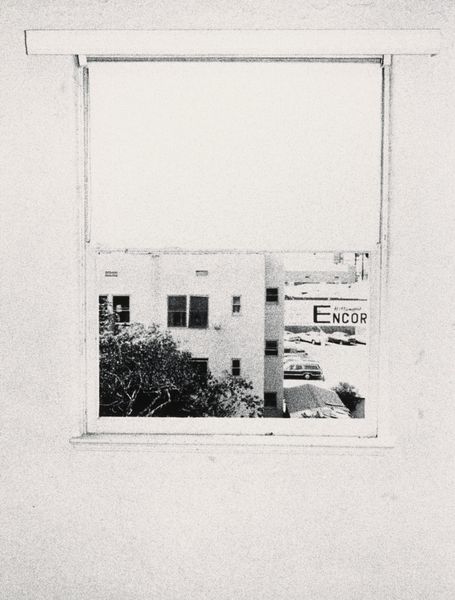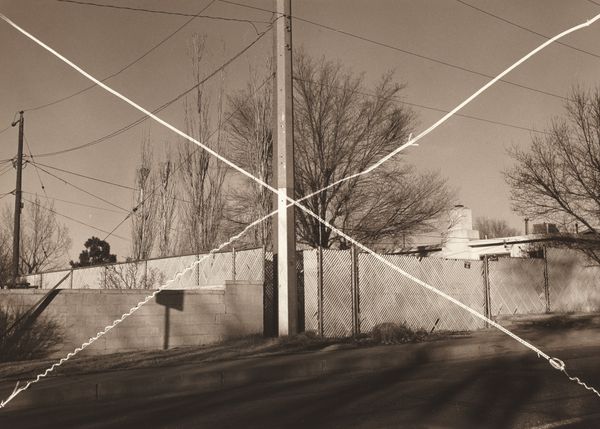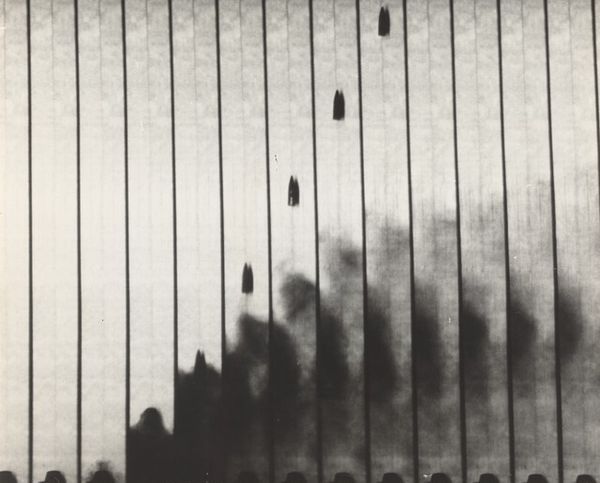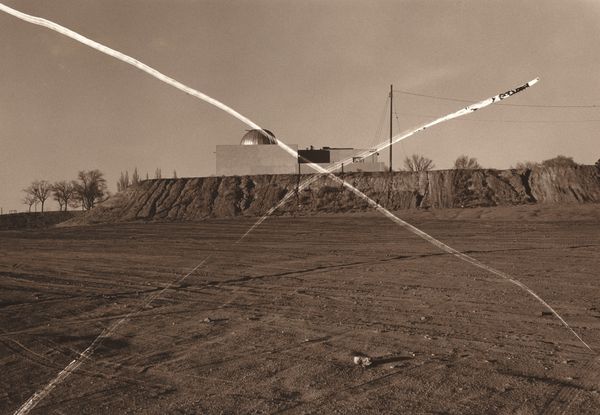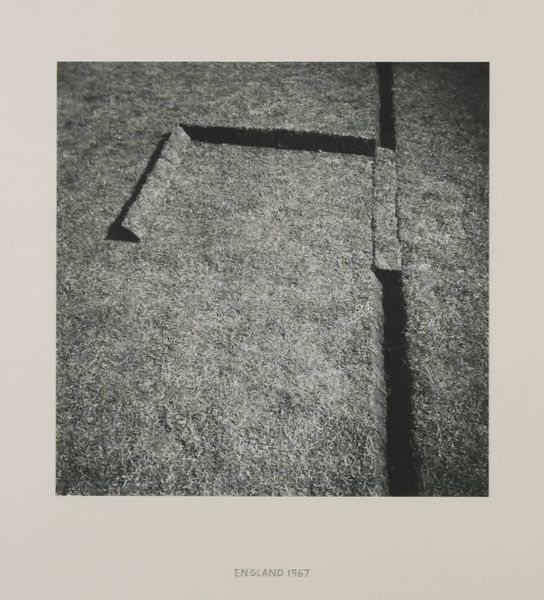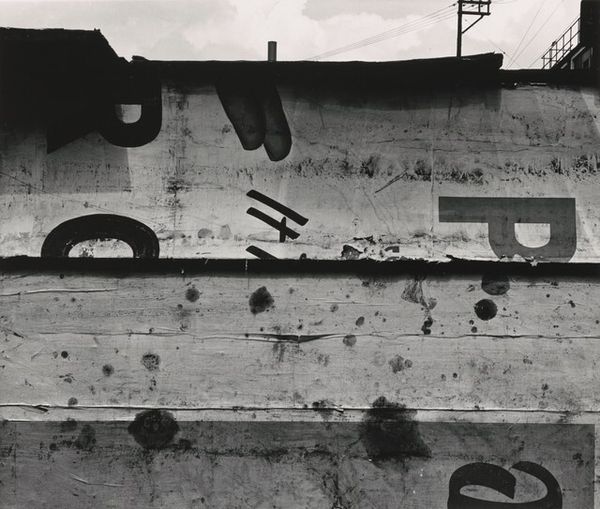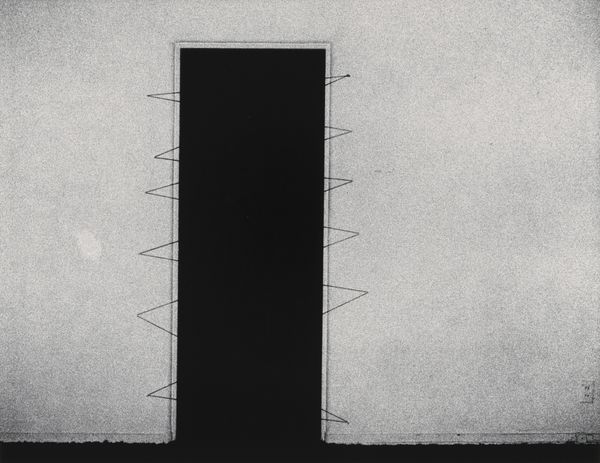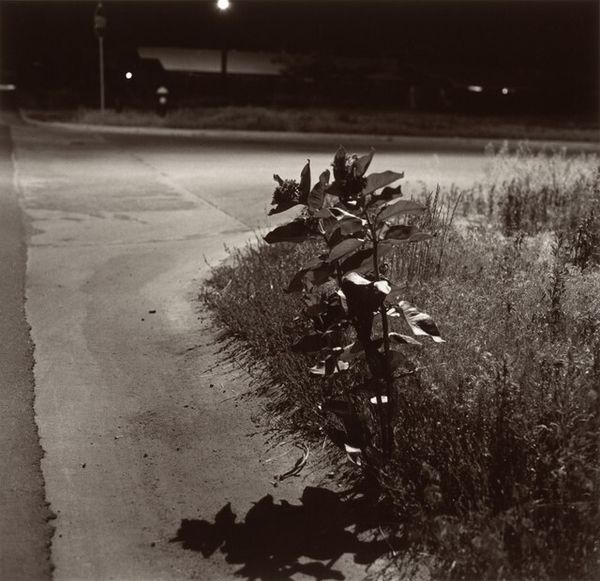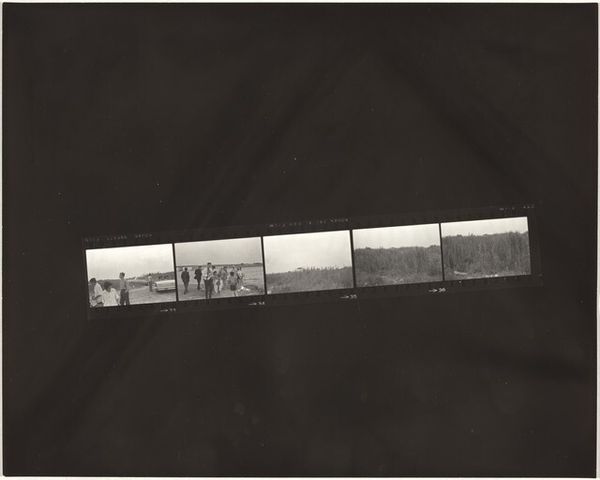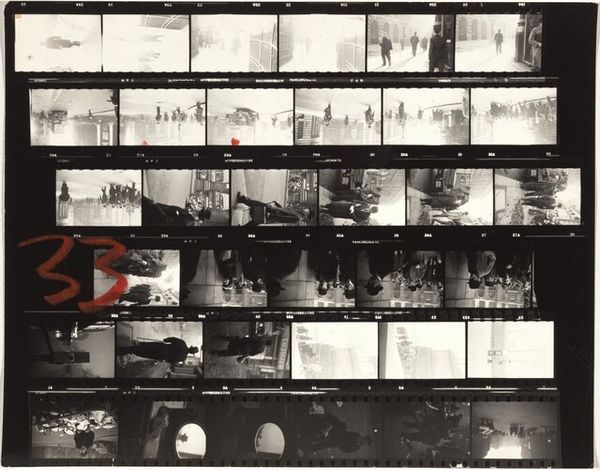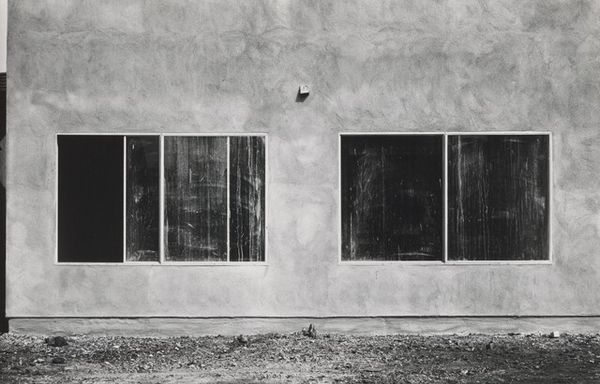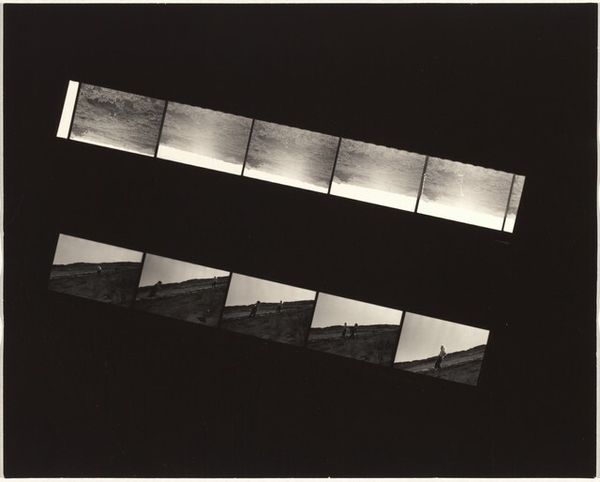
photography
#
conceptual-art
#
black and white photography
#
sculpture
#
landscape
#
photography
#
monochrome photography
#
monochrome
Dimensions: image: 23.81 × 34.4 cm (9 3/8 × 13 9/16 in.) sheet: 27.94 × 35.24 cm (11 × 13 7/8 in.)
Copyright: National Gallery of Art: CC0 1.0
Editor: This is Thomas Barrow’s “H2O Whole Plate” from 1974. It’s a black and white photograph, and it's making me feel a little uneasy. It’s a very stark, almost clinical image, with those strange…holes? Scattered across the sky. What do you see in this piece, considering its place in the art world at the time? Curator: What I find compelling about Barrow’s photograph is precisely that tension it creates. Consider the context of 1970s photography. We’re moving away from purely representational work towards conceptual art using photography as a medium. This piece, with its ambiguous manipulation of the image, directly challenges our understanding of photographic truth. What kind of institutional space do you think of when you view this image? Editor: Well, seeing the fence and the industrial looking building I imagine some sort of test facility or a military complex. Why would Barrow use such a specific unsettling backdrop? Curator: Exactly. Barrow uses this space—this possibly restricted site—as a canvas to explore post-war anxieties, a reflection of our culture grappling with control and technological impact. Those 'holes,' possibly added in the darkroom, disturb the clean surface, suggesting invisible forces at work. Does it strike you that the photo would exist without the artistic intervention? Editor: No, not at all. Now I see the 'holes' aren’t just about defacing the image; they become focal points, inviting us to question the surface and what lies beneath, socially and politically. Thank you for contextualizing it. Curator: Indeed. Thinking about photography not just as a recording device, but a medium for active critique gives us fresh perspectives to examine and contextualize artworks impact through time.
Comments
No comments
Be the first to comment and join the conversation on the ultimate creative platform.
